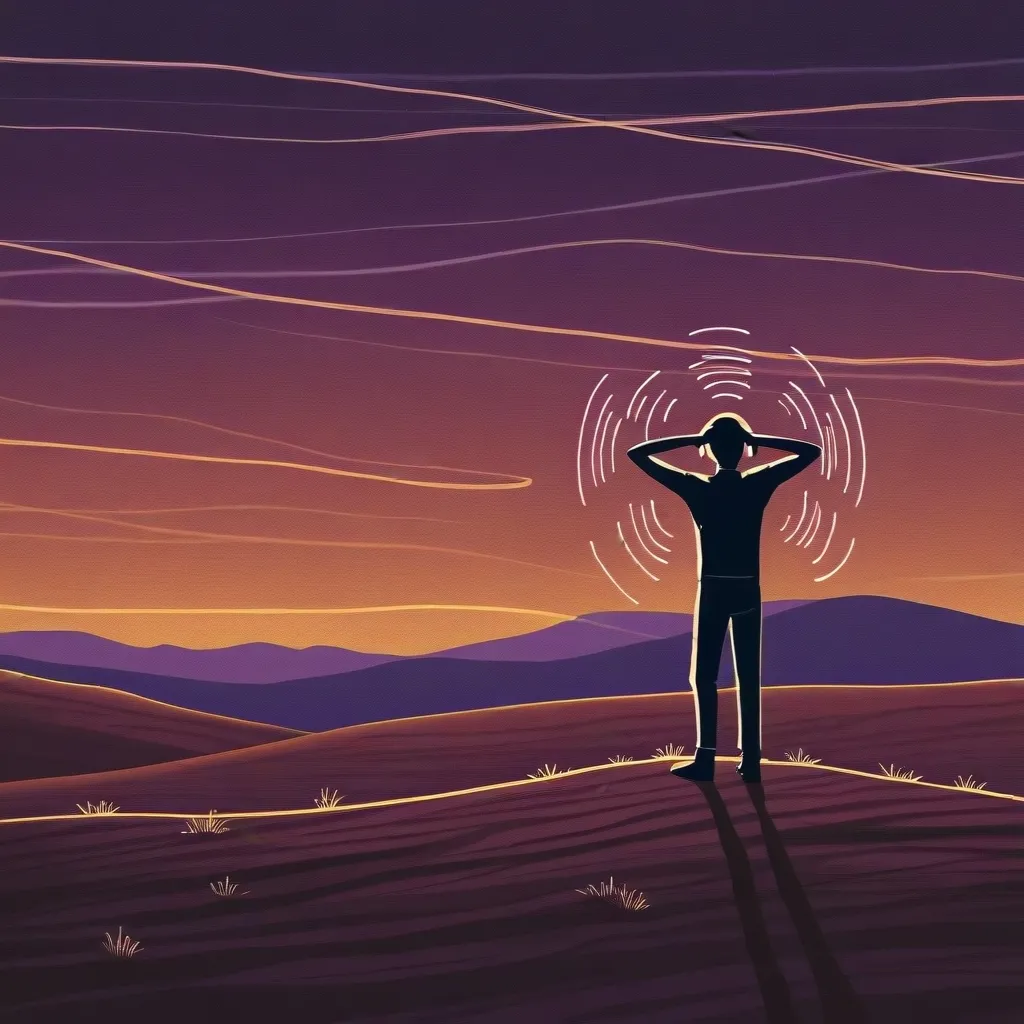The Enigma of the Taos Hum: A Mysterious Sound Baffling Science
In the picturesque town of Taos, New Mexico, a peculiar phenomenon has been captivating the attention of locals and scientists for decades. Known as the “Taos Hum,” this mysterious sound has become a part of local folklore, sparking curiosity, frustration, and even fear among those who can hear it.
Imagine living in a place where a constant, inexplicable sound follows you day and night. For some Taos residents, this is their reality. The Taos Hum isn’t your typical noise pollution. It’s an elusive, low-frequency sound that only about 2% of the local population can hear. Talk about an exclusive club nobody wants to join!
So, what exactly does this infamous hum sound like? Well, that’s where things get even more interesting. It’s not a one-size-fits-all kind of noise. Some folks describe it as a distant diesel engine idling, while others swear it’s more like a refrigerator on steroids. And for the unlucky few, it’s as loud as a jet engine roaring in their ears. Yikes!
Now, you might be thinking, “Why don’t they just use some noise-canceling headphones and call it a day?” If only it were that simple! The Taos Hum isn’t your average external noise. Covering your ears doesn’t make it go away. It’s like the sound is coming from inside your head. Spooky, right?
Let’s talk about the “lucky” 2% who can hear this mysterious hum. Scientists have been scratching their heads trying to figure out why only certain people can hear it. Interestingly, it doesn’t discriminate between genders – men and women are equally likely to hear it. But here’s a twist: middle-aged folks seem to be more susceptible to this auditory oddity. Maybe it’s nature’s way of making sure we don’t get too comfortable as we age!
Now, you’d think with all our fancy technology and brilliant minds, we’d have cracked this case by now. But nope! The Taos Hum remains as mysterious as ever. Scientists have brought in all sorts of sensitive equipment, hoping to catch this elusive sound red-handed. But every time they set up their gear, the hum seems to go on a coffee break. It’s like trying to catch a unicorn – always one step ahead!
Of course, where there’s mystery, there are theories. And boy, do we have theories! Some folks reckon it’s all down to industrial plants or gas pipelines. Others point fingers at the military, suggesting it might be linked to some top-secret communication system. And then there are those who think Mother Nature herself might be behind it all, with seismic shifts causing the earth to hum.
But wait, there’s more! Some scientists have suggested that the hum might not be external at all. They propose that it could be coming from inside our own ears. Apparently, our ears can generate their own sounds – a phenomenon called spontaneous otoacoustic emissions. It’s like having a tiny, very annoying, rock band in your head.
And let’s not forget the possibility that it could all be in our minds. Now, before you start thinking we’re calling people crazy, that’s not the case at all. Our brains are capable of some pretty wild things, including auditory hallucinations that have nothing to do with mental illness. It’s just our gray matter getting a bit creative with its soundscapes.
For those who can hear the Taos Hum, it’s no laughing matter. Imagine having a constant, low rumble following you around 24/7. It’s enough to drive anyone up the wall! Some residents have reported headaches, anxiety, and sleepless nights. A few have even considered packing up and moving away. Talk about sound pollution taken to the extreme!
But here’s the kicker – Taos isn’t the only place dealing with mysterious hums. Similar phenomena have been reported all over the world. From the “Windsor Hum” in Ontario to the “Auckland Hum” in New Zealand, it seems like the Earth is trying to tell us something. Or maybe it’s just humming along to some cosmic tune we can’t quite catch.
Despite all the head-scratching and theorizing, the true origin of the Taos Hum remains as elusive as ever. Scientists, researchers, and curious locals continue to investigate, hoping to crack this auditory conundrum. It’s like a real-life X-Files episode, minus the alien abductions (at least, as far as we know).
The Taos Hum serves as a fascinating reminder that our world is still full of mysteries. In an age where we can send rovers to Mars and clone sheep, it’s humbling to know that something as seemingly simple as a sound can still baffle our best minds.
So, what’s next in the saga of the Taos Hum? Well, that’s anyone’s guess. Maybe tomorrow, someone will have a eureka moment and solve the mystery once and for all. Or perhaps the hum will continue to be a source of wonder and frustration for years to come.
One thing’s for sure – the Taos Hum has put this small New Mexican town on the map in a big way. It’s become a part of local identity, a topic of endless debate, and a reminder that sometimes, the most intriguing mysteries are right in our own backyards (or ears, in this case).
As we continue to explore the unexplained corners of our world, the Taos Hum stands as a testament to the enduring power of mystery. It challenges our understanding of sound, perception, and the human experience. Who knows? Maybe one day, we’ll look back on this mystery and laugh at how simple the solution was. Or maybe, just maybe, some things are meant to remain unexplained, keeping us humble and curious in the face of the unknown.
So, the next time you’re in Taos, keep your ears open. Who knows? You might just become part of the 2% club. And if you do start hearing a mysterious hum, don’t panic. Welcome to the club of those who get to experience one of the world’s most perplexing auditory phenomena firsthand. Just remember to bring earplugs – you might need them!






